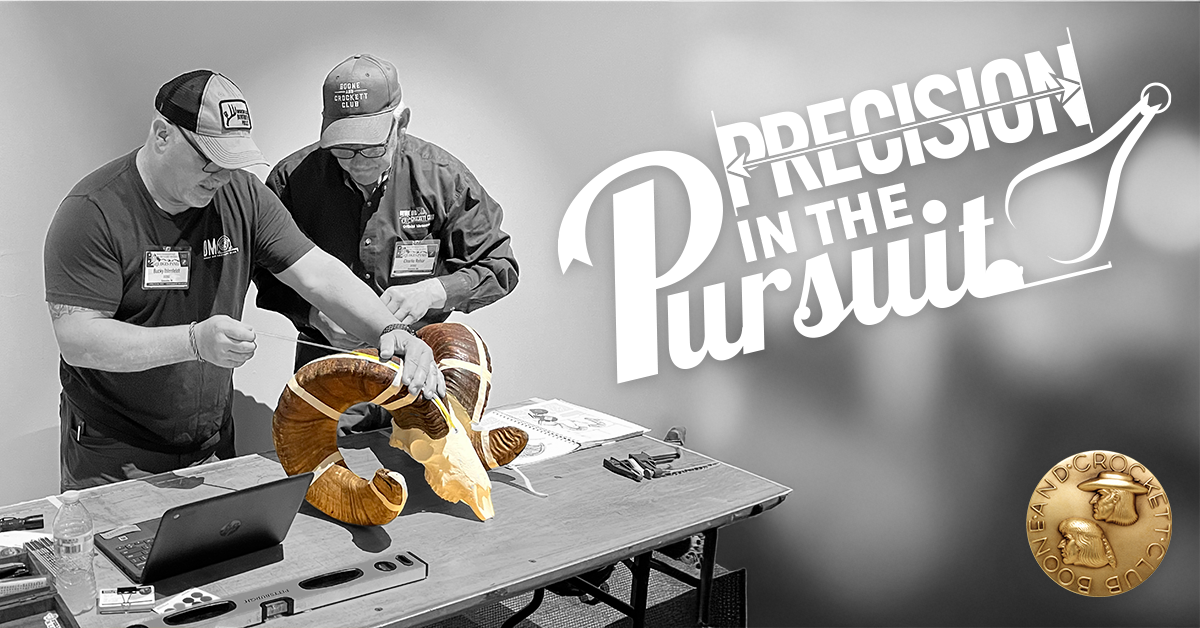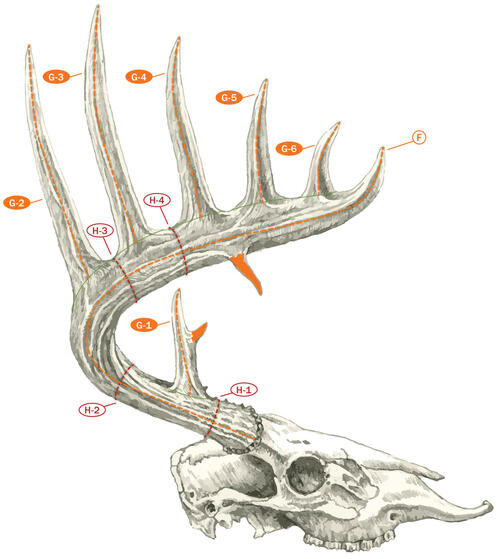Tips on Scoring a Whitetail Deer

Measuring a whitetail deer rack accurately requires precision and a basic understanding of the rules, particularly the tricky distinctions between normal and abnormal points and the main beam. Following these critical guidelines can help ensure a smooth entry process and an accurate score.
Pre-Scoring Preparation: Marking and Baselines
Before a single measurement is taken, proper preparation of the antlers is essential. First, identify all normal points and establish their baselines off the main beam. Next, identify all abnormal points and draw their baselines.
A vital step in this process is using masking tape for all baseline markings, rather than marking directly on the antlers. It is also recommended to distinguish abnormal points with a visual marker, such as a piece of colored electrical tape on the tips. This helps the measurer clearly understand your designations, especially for unique or “cluster” configurations.
Remember, the official definition of a point for measurement is any projection that is one inch or more in length, and where the length exceeds the width. Once a point qualifies, the measurement is taken for the entire projection, from the tip back to the baseline. If a projection looks close but does not qualify, make a note in the remarks section of the score chart.
Decoding the Main Beam vs. Drop Tine
One of the most complex scoring challenges is differentiating the main beam from an abnormal point, commonly referred to as a drop tine. Unfortunately, it is impossible to illustrate every possible configuration a whitetail can grow, so this scenario is often handled on a case-by-case basis.
The core rule for designation is that the drop must clearly be an abnormal growth coming off the bottom of a definitive main beam for it to be scored as an abnormal point. If the main beam appears to “crab claw” or rotate near the end, the main beam is designated as the lower projection in almost all cases. Furthermore, the shape or direction of the opposite main beam (even if it turns up at the end) does not prevent the lower projection on the contested side from being designated the main beam.
Understanding Point Designation
- Correctly classifying points as normal or abnormal is essential for minimizing deductions and ensuring the trophy is entered into the correct category (typical or non-typical).
Normal Points must arise from the top outside edge of the main beam at roughly spaced intervals and must generally be paired with the opposite antler. Unpaired points located at the very end of the main beam are still considered normal.
Abnormal Points include any burr points, points arising from the sides, top inside edge, or bottom of the main beam, and all points occurring below G-1 (the brow tine). A point that comes off the top outside edge but is an extra point, disrupting symmetry, is called a non-symmetry or unmatched normal point and is scored as abnormal.
Circumference and Spread Measurement Tips
Circumference Rule: There are always four circumference measurements, regardless of the number of normal points. Abnormal points cannot be used as separators for these measurements. If there is no point attempt beyond the G-3, the final circumference measurement is taken at the halfway point between the center of the G-3 and the end of the main beam. This measurement location is defined and must be taken there, even if an abnormal point occurs at that spot or if antler material is missing.
Spread Measurements: The greatest spread and tip-to-tip spreads are supplementary data but are required for entry, and missing them will result in a processing delay. Importantly, if the main beam tips cross, the tip-to-tip measurement is not recorded as a zero, but rather the distance from the center of one main beam tip to the center of the other.
Online Scoring Calculators Official Measurer Locator
When you enter your trophy into the Boone and Crockett system, keep in mind that more information is always better. If you know how old your animal was, note that on the hunt information sheet when you enter it. If you provide weather data, that helps, too. And everyone loves to know the caliber, rifle and bullet used, which allows us to put together databases like the new Method Visualizer. Ever wonder what caliber has killed the most trophy whitetails? The most popular caliber in the West? Find out with the Method Visualizer tool.



